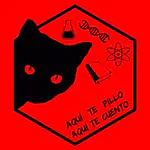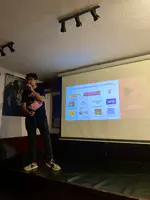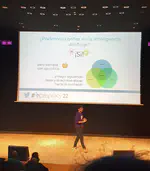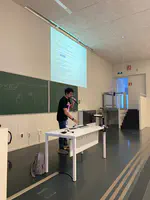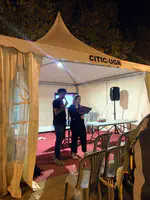Biography
I am Postdoctoral researcher working at the CVBLab of Polytechnic University of Valencia (UPV). My main research lines are weakly supervised learning, Gaussian Processes and medical imaging. I finished my PhD in July of 2022. My thesis was about weakly supervised learning with Gaussian Processes applied to medical images. Now, my main focus is on crowdsourcing, explainability and uncertainty quantification for medical images. The PI of my research group is Valery Naranjo. I am very committed to science comunication.
Interests
- Artificial Intelligence in healthcare
- Gaussian Processes
- Crowdsourcing
- Uncertainty Quantification
- Explainability
Education
-
PhD in Computer Science, 2022
University of Granada
-
Msc in Artificial Intelligence, 2018
University of Granada
-
BSc in Mathematics, 2017
University of Granada
Experience
Postdoctoral Researcher
Polytechnic University of Valencia
Postdoctoral Researcher
University of Granada
Predoctoral Researcher
University of Granada
Visits
Projects
*
Recent & Upcoming Talks
Recent Publications
Quickly discover relevant content by filtering publications.
(2024).
An end-to-end approach to combine attention feature extraction and Gaussian Process models for deep multiple instance learning in CT hemorrhage detection.
Expert Systems with Applications, April 2024, pp. 122296.
(2024).
Are you sure it’s an artifact? Artifact detection and uncertainty quantification in histological images.
Computerized Medical Imaging and Graphics, March 2024, pp. 102321.
(2024).
Learning from crowds for automated histopathological image segmentation.
Computerized Medical Imaging and Graphics, March 2024, pp. 102327.
(2023).
Annotation protocol and crowdsourcing multiple instance learning classification of skin histological images: The CR-AI4SkIN dataset.
Artificial Intelligence in Medicine (AIM), Volume 145, November 2023, pp. 102686.
(2023).
Crowdsourcing Segmentation of Histopathological Images Using Annotations Provided by Medical Students.
Artificial Intelligence in Medicine (AIME), edited by Springer, Portoroz (Slovenia), June 2023, pp. 245-249.
(2023).
Deep Gaussian Processes for classification with multiple noisy annotators. Application to breast cancer tissue classification.
IEEE Access, Volume 11, January 2023, pp. 6922 - 6934.
(2022).
Deep Gaussian processes for multiple instance learning: Application to CT intracranial hemorrhage detection.
Computer Methods and Programs in Biomedicine, Volume 219, June 2022, 106783.
(2021).
Learning from crowds in digital pathology using scalable variational Gaussian processes.
Scientific Reports, Volume 11, Number 1, June 2021, pp. 1-9.
(2021).
A Contribution to Deep Learning Approaches for Automatic Classification of Volcano-Seismic Events: Deep Gaussian Processes.
IEEE Transactions on Geoscience and Remote Sensing. Volume 59, Number 5, May 2021, pp. 3875-3890..
(2020).
A TV-based image processing framework for blind color deconvolution and classification of histological images.
Digital Signal Processing. Volume 101, no. 6, June 2020, 102727.
(2019).
Classifying Prostate Histological Images Using Deep Gaussian Processes on a New Optical Density Granulometry-Based Descriptor.
In IDEAL 2019.
(2019).
A new optical density granulometry-based descriptor for the classification of prostate histological images using shallow and deep Gaussian processes.
Computer Methods and Programs in Biomedicine. Volume 178, September 2019, pp. 303-317.
